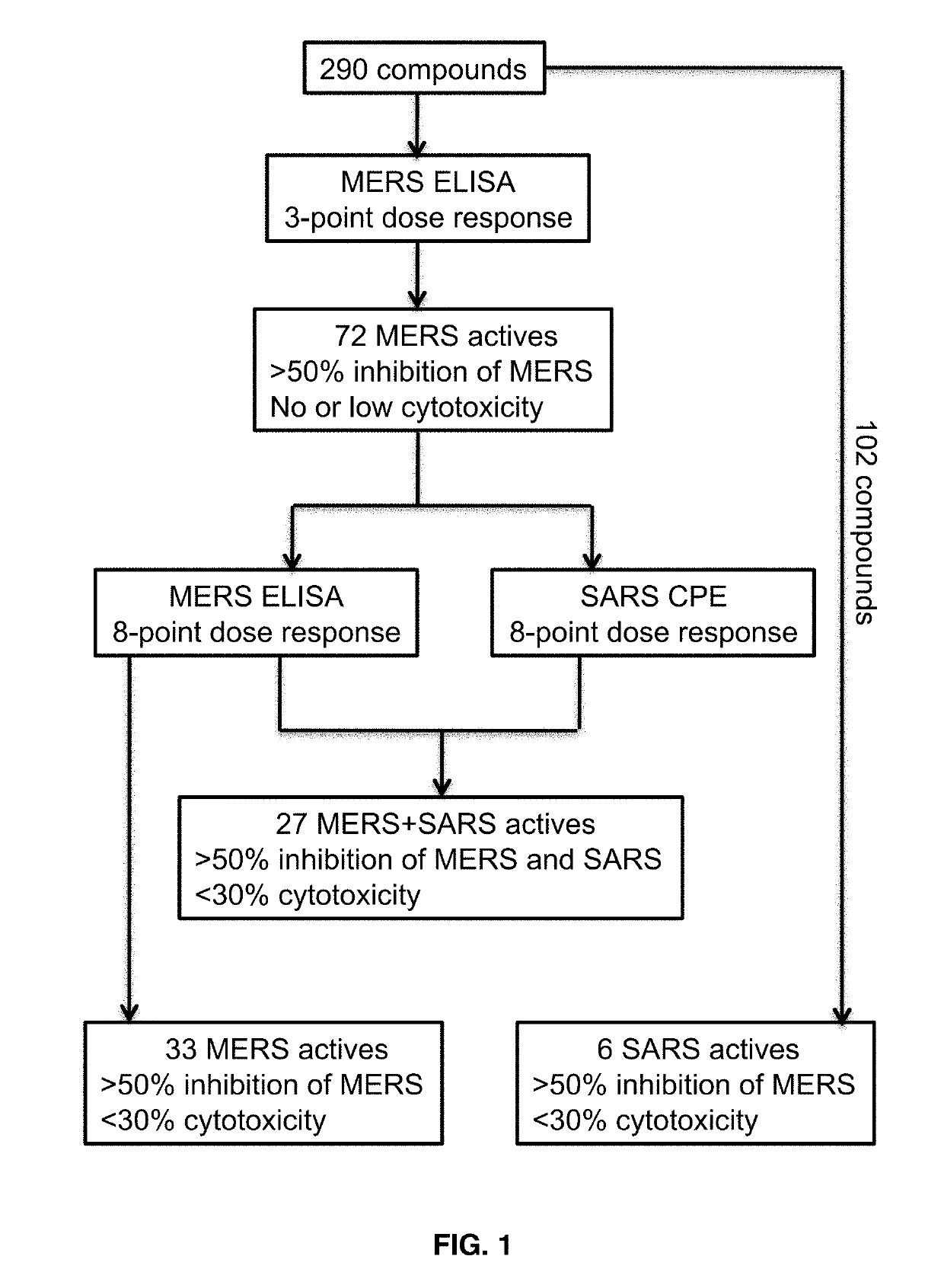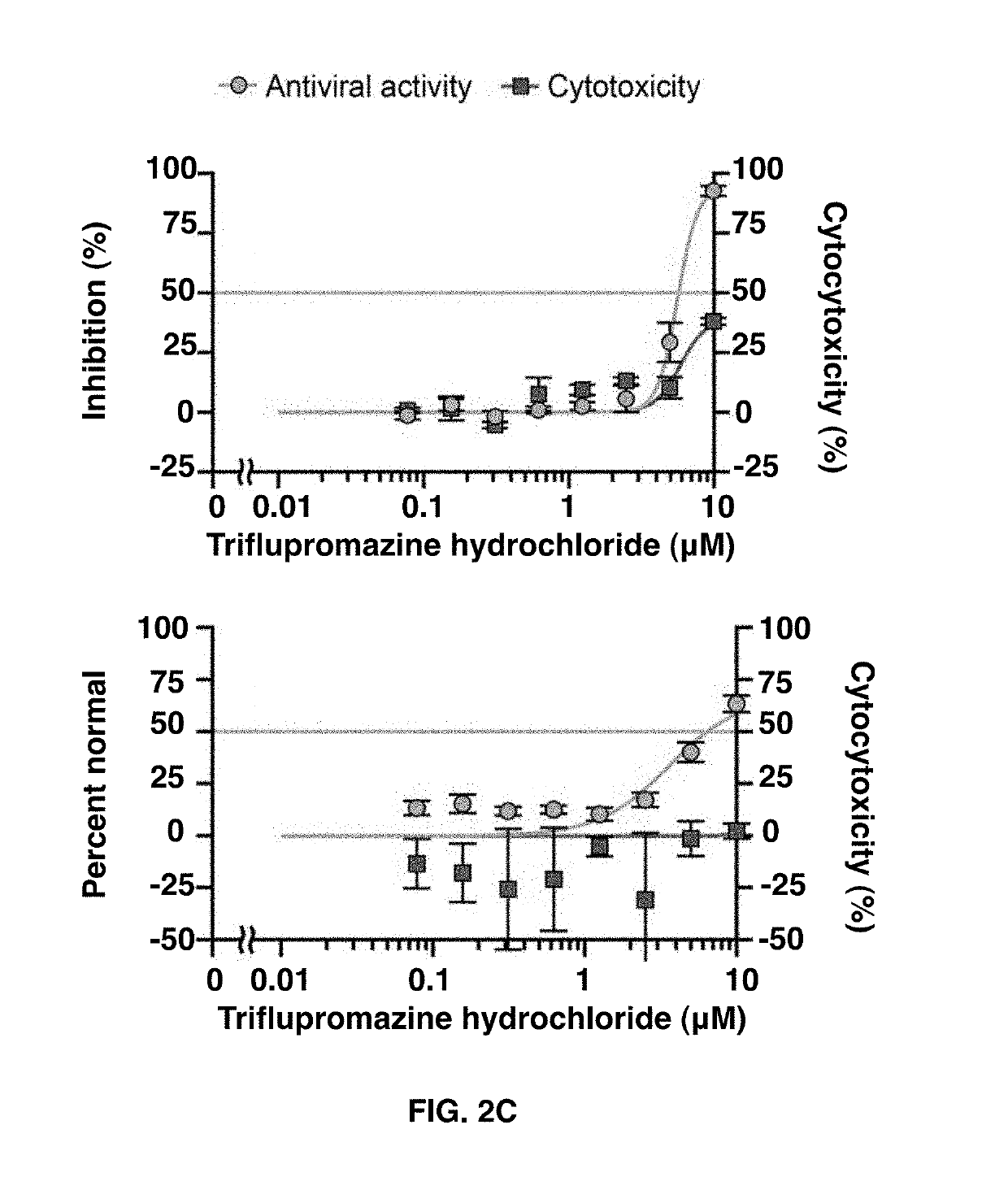Methods of treating coronavirus infection
a coronavirus and infection technology, applied in the field of coronavirus infection treatment methods, can solve the problems of deficient compositions and methods of prior art to treat respiratory infections
- Summary
- Abstract
- Description
- Claims
- Application Information
AI Technical Summary
Benefits of technology
Problems solved by technology
Method used
Image
Examples
example 1
Methods
[0037]Vero E6 cell line (ATCC#1568, Manassas, Va.) was maintained in Dulbecco's modified Eagle's medium (DMEM) plus 10% FBS. The Jordan strain of MERS-CoV (GenBank accession no. KC776174.1, MERS-CoV—Hu / Jordan-N3 / 2012 [1]), provided by Drs. Kanta Subbarao (National Institutes of Health, Bethesda, Md.) and Gabriel Defang (NAMRU-3) was amplified in Vero E6 cells at a multiplicity of infection (m.o.i.) of 0.01. On day 4 after infection, when the cytopathic effect (CPE) was visible, virus-containing supernatants were collected and clarified by centrifugation. MERS-CoV was titered on Vero E6 cells by plaque assay. All procedures using live MERS-CoV were performed at biosafety level 3 conditions at the Integrated Research Facility (NIAID / NIH), Frederick.
[0038]Vero E6 cell line (ATCC#1568, Manassas, Va.) at University of Maryland, Baltimore, was maintained in minimal Eagle's medium (MEM; Corning) supplemented with 10% FBS (SAFC), 1% penicillin / streptomycin (Gemini...
example 2
Results
Overview of Screening Process
[0066]A primary screen of 290 compounds containing both approved drugs and targeted molecular probes was performed with 3 point dose response curves to identify compounds with activity against MERS-CoV using the cell-based ELISA assay (FIG. 1). The analysis of the raw screening data indicated that 72 compounds that were active against MERS-CoV (>50% inhibition) with no or low cytotoxicity (<30% inhibition). In the secondary screen, the 72 compounds were plated at 8 doses for confirmation of antiviral activity against MERS-CoV as well as to determine IC50 values in the MERS-ELISA assay. The 72 compounds were also evaluated for their antiviral activity against SARS-CoV using a cytopathic effect (CPE) inhibition assay. A subset of 102 compounds was independently screened against SARS-CoV to see if there are compounds that are selective for SARS-CoV.
Overview of Drugs Active Against SARS-CoV, MERS-CoV or Both
[0067]Analysis of data from all screening ac...
PUM
| Property | Measurement | Unit |
|---|---|---|
| weight loss | aaaaa | aaaaa |
| weight loss | aaaaa | aaaaa |
| emission wavelength | aaaaa | aaaaa |
Abstract
Description
Claims
Application Information
 Login to View More
Login to View More - R&D
- Intellectual Property
- Life Sciences
- Materials
- Tech Scout
- Unparalleled Data Quality
- Higher Quality Content
- 60% Fewer Hallucinations
Browse by: Latest US Patents, China's latest patents, Technical Efficacy Thesaurus, Application Domain, Technology Topic, Popular Technical Reports.
© 2025 PatSnap. All rights reserved.Legal|Privacy policy|Modern Slavery Act Transparency Statement|Sitemap|About US| Contact US: help@patsnap.com



